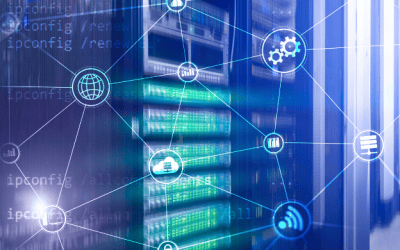Where threats lurk in the shadows of the digital realm, it’s easy to overlook one critical factor: the human element. While technological advancements with XDR (Extended Detection and Response) and EDR (Endpoint Detection and Response) continue to fortify our defenses, the psychology behind cybersecurity remains just as crucial—if not more so—in safeguarding sensitive data and maintaining a robust security posture.
Organizations face a relentless barrage of cyber threats in today’s interconnected landscape, ranging from phishing scams to sophisticated malware attacks. While firewalls and encryption protocols provide essential layers of protection, they are only as effective as those who implement and adhere to them. After all, behind every firewall lies a human operator capable of strengthening or compromising the organization’s security defenses.
The Psychology of Cybersecurity
Understanding the psychology behind cybersecurity is essential for developing effective strategies to protect against cyber threats. Human behavior plays a significant role in shaping the security landscape, influencing the vulnerabilities and strengths of organizational defenses.
It encompasses various factors, including cognitive biases, social dynamics, and behavioral economics. Organizations can develop more effective strategies to mitigate threats and protect sensitive information by understanding how human behavior influences cybersecurity risks and vulnerabilities. From educating employees about common cyber threats to designing user-friendly security measures, incorporating insights from psychology is essential for building a resilient and security-aware organization in today’s digital landscape.
For detailed examples of social engineering tactics used by cybercriminals, check out our post about Social Engineering in the Digital Age.
The Role of Security Awareness
Building a security-aware culture within an organization is important to mitigating these risks. By educating employees about common cyber threats and best practices for safeguarding sensitive information, organizations can empower their workforce to become active participants in their cybersecurity efforts. Training programs, clear communication, and regular security updates are just a few strategies to instill a culture of vigilance and accountability.
- Educating Employees on Cyber Threats: Comprehensive training programs covering phishing scams, malware detection, password hygiene, and social engineering tactics empower employees to recognize and respond effectively to potential security risks.
- Interactive Training Programs: Engaging workshops and scenario simulations allow employees to apply cybersecurity knowledge practically, enhancing retention and comprehension of security concepts.
- Regular Security Updates and Communication: Keeping employees informed about emerging threats, security best practices, and company policies builds open communication and ensures vigilance in cybersecurity efforts.
- Instilling a Culture of Vigilance and Accountability: Emphasizing shared responsibility and recognizing security-conscious behaviors cultivates a culture where cybersecurity is integrated into daily operations. By encouraging employees to report suspicious activities without fear of reprisal and fostering a sense of collective responsibility, organizations can harness the human element as a robust defense against cyber threats.
Also, partnering with a U.S.-based Security Operations Center (SOC) provides organizations with 24/7 monitoring and rapid response capabilities, bolstering their ability to detect, investigate, and remediate security incidents. A SOC staffed by experienced cybersecurity professionals offers real-time threat intelligence and incident response expertise, enhancing the organization’s overall security posture.
Human Intelligence and Adaptability
While human behavior can indeed pose vulnerabilities in cybersecurity, it also presents a significant opportunity for organizations to strengthen their defenses. It is clear that AI and computer-based technology have taken over some aspects of cybersecurity, like Vulnerability Management, which proactively identifies and addresses security weaknesses in systems and applications, or Cyber Risk Score, an assessment tool that evaluates an organization’s cybersecurity posture and identifies areas of weakness that may pose significant risks. But, in today’s interconnected world, where cyber threats constantly evolve in sophistication and scale, the human element can serve as a formidable barrier against malicious actors.
One of the key strengths of the human element lies in its intelligence and adaptability. Unlike automated security measures that may struggle to keep pace with rapidly evolving threats, human beings possess the cognitive abilities to analyze complex situations, identify patterns, and make informed decisions in real time. This human intelligence allows organizations to detect and respond to emerging threats more effectively, complementing the capabilities of automated security systems.
- Analytical Skills: Human analysts can critically evaluate information to detect subtle signs of suspicious activity that automated systems may overlook. This includes identifying anomalous behavior in network traffic and user activity and leveraging their analytical skills to detect potential threats.
- Pattern Recognition: Humans excel at recognizing patterns, drawing on past experiences and intuition to identify recurring correlations that may indicate a security threat. This ability allows cybersecurity professionals to anticipate and respond to emerging threats effectively.
- Real-Time Decision-Making: Human analysts can make nuanced decisions in real time, assessing the severity and urgency of potential security incidents based on context and situational nuances. This flexibility is crucial in rapidly evolving cybersecurity environments.
- Complementing Automated Security Systems: Human intelligence complements automated security systems by providing context, insight, and judgment. While computerized systems excel at processing data and detecting known patterns, humans offer critical thinking and contextual understanding to effectively interpret and respond to emerging threats.
- Human-Centric Threat Detection: Humans are uniquely adept at detecting subtle signs of suspicious activity that may elude automated detection systems. Whether noticing unusual behavior in network traffic, identifying anomalies in system logs, or recognizing social engineering tactics in phishing emails, human intuition plays a vital role in early threat detection. By empowering employees to remain vigilant and report potential security incidents promptly, organizations can leverage their workforce’s collective wisdom and intuition to identify and neutralize threats before they escalate.
In the battle against cyber threats, technology alone is not enough. The human element remains both a potential vulnerability and a potent asset in safeguarding our digital assets. By understanding the psychology of cybersecurity and fostering a security-aware culture, organizations can enhance their resilience against cyber threats and build a safer, more secure digital future.
As we navigate the intricate web of the digital landscape, let us remember that behind every firewall lies the human element—a force to be reckoned with in the ongoing fight for cybersecurity.




